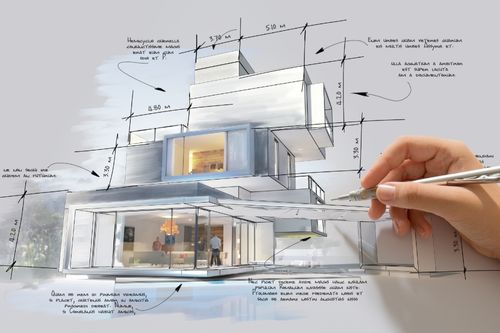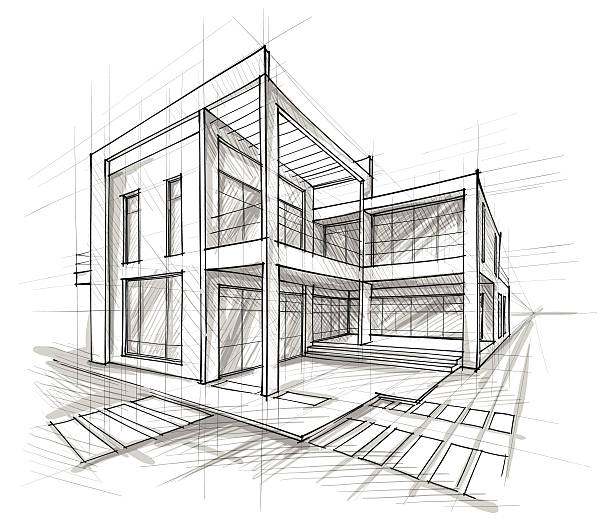Discover Ingenious Designs with Leading CDA Architects for Your Next Job
Discover Ingenious Designs with Leading CDA Architects for Your Next Job
Blog Article
Comprehending the Collaborative Process Between Architects and Designers in Modern Building Projects
The collective process in between designers and designers is necessary in modern-day building and construction tasks, as it balances design intent with design usefulness. This partnership not just affects the aesthetic and functional aspects of a task however likewise plays a critical function in dealing with sustainability obstacles. By employing effective interaction methods and leveraging sophisticated technologies, such as Structure Info Modeling (BIM), teams can function a lot more cohesively. The intricacies of this cooperation typically existing one-of-a-kind challenges that can prevent progress. Checking out these dynamics reveals understandings that could dramatically affect project results and general market criteria.
The Relevance of Collaboration
The collective harmony between designers and designers is crucial for the successful awareness of any kind of construction project. This collaboration combines distinct know-how and viewpoints, enabling the integration of ingenious layout with sensible engineering services. By working together, designers and designers can make certain that a task not just fulfills visual and useful needs but also complies with safety, sustainability, and monetary restrictions.
Partnership promotes a shared vision, facilitating the alignment of goals and expectations from the outset. This alignment is essential in dealing with prospective challenges and mitigating risks that could develop during the project lifecycle. Furthermore, a collaborative technique permits the effective allowance of resources, enhancing both time and cost.
The significance of collaboration encompasses the repetitive procedure of layout and building, where feedback from designers can notify architectural decisions, leading to more feasible and lasting styles. On the other hand, engineers can inspire designers to think artistically regarding how to achieve architectural integrity without jeopardizing artistic intent. Ultimately, the joint connection in between designers and engineers is not simply useful; it is fundamental to the development of premium, useful, and ingenious developed settings that satisfy the needs of society.
Interaction Methods and Devices
Efficient interaction techniques and devices are vital for cultivating partnership in between engineers and engineers throughout the project lifecycle. Developing clear networks of interaction is vital to make sure that all staff member are straightened with project goals, timelines, and duties. Routine conferences, both in-person and virtual, offer possibilities for stakeholders to discuss development, address problems, and make notified choices.
Making use of task monitoring software, such as BIM (Building Details Modeling) systems, improves cooperation by making it possible for real-time sharing of design adjustments and technological specifications. These tools help with openness, permitting engineers and engineers to imagine modifications and examine their influence on the overall project.

Shared Objectives and Job Vision

Developing common goals entails open dialogue and a complete understanding of each discipline's payments. Architects commonly focus on style intent, spatial partnerships, and user experience, while designers highlight architectural integrity, systems performance, and conformity with laws (cda architects). When these perspectives are lined up, the outcome is a natural project that complies with both imaginative aspirations and technical expediency
In addition, a well-defined project vision promotes responsibility amongst group participants, encouraging each participant to take ownership of their role in accomplishing the preferred result. Routine check-ins and joint workshops can better reinforce this commitment, enabling adjustments to be made as the job develops. Ultimately, a common vision not just boosts synergy yet additionally boosts the top quality of the last deliverable, bring about effective job conclusion.
The Duty of Modern Technology
Leveraging innovation has become essential in enhancing cooperation between architects and engineers. Structure Details Modeling (BIM) stands out as a crucial innovation, permitting both engineers and engineers to create comprehensive 3D designs that envelop design intent and architectural stability.
Moreover, cloud-based platforms allow seamless cooperation, enabling job stakeholders to access and update job data from anywhere. This promotes a culture of transparency and responsibility, as modifications can be tracked and examined in real-time. In addition, mobile applications more boost interaction, giving on-site groups with prompt access to project specifications and updates.
Emerging technologies such as artificial intelligence and machine learning are additionally starting to play a duty in anticipating analysis, helping groups recognize possible concerns prior to they emerge. Inevitably, the function of innovation in architecture-engineering partnership not only boosts operations effectiveness however also enhances technology, causing more successful task end results. By welcoming go to my blog these technical improvements, architects and designers can make sure a more natural and efficient collaborative procedure throughout the building lifecycle.
Case Researches in Effective Partnerships
Countless case studies show the extensive effect of reliable collaborations between architects and engineers on project results. One significant example is the cooperation on the High Line in New York City City, where landscape architects, designers, and urban organizers collaborated to transform a deserted rail line right into a vibrant public park. This multidisciplinary technique not only improved the visual high quality yet additionally ensured structural safety and security and environmental sustainability.
An additional exemplary situation is the layout and building of the Sydney Concert Hall. The partnership between engineer JÃ ¸ rn Utzon and structural designer Ove Arup exemplified ingenious analytic. Their collaboration enabled the renowned shell-like layout while addressing complicated design obstacles, ultimately causing a classic architectural masterpiece.
The Burj Khalifa in Dubai additionally linked here shows the significance of collaborative efforts. cda architects. The integration of design and design expertise allowed the job group to attain extraordinary elevations while adhering to safety policies and aesthetic vision
These examples highlight the value of interaction, trust fund, and shared purposes. In today's intricate building and construction environment, such partnerships are important to navigating challenges and delivering projects that meet both functional and visionary goals.
Conclusion
To conclude, the collaboration between architects and designers is essential for the success of modern-day construction tasks. Effective communication methods, a shared project vision, and the integration of innovative modern technologies are essential parts that promote this partnership. By fostering a society of accountability and leveraging tools such as Building Information Modeling (BIM), groups can browse project intricacies, making sure that aesthetic, functional, and sustainability purposes are attained. Inevitably, this synergy results in innovative and effective job end results.
Report this page